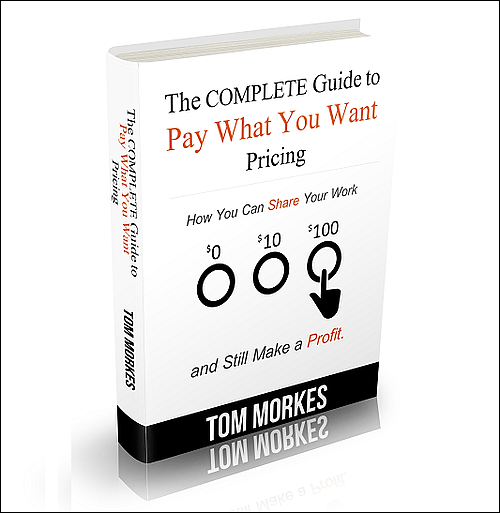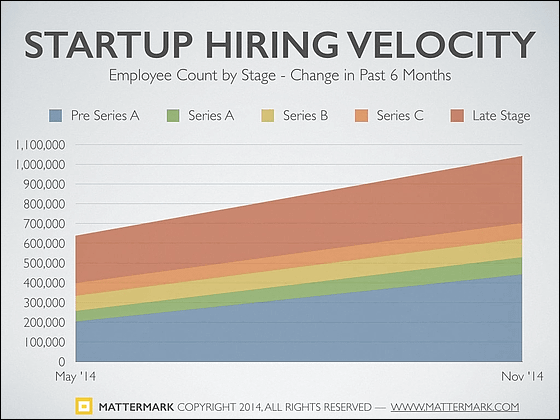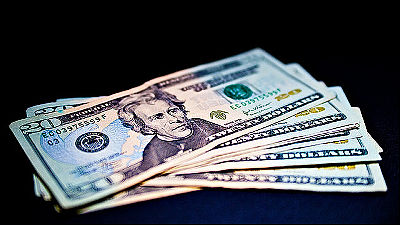The result of 'PWYW' pricing, 'Pay only what you want to pay'

By
Goods and services are priced in advance, and consumers generally pay the amount equivalent to the price they are satisfied with, but the customer is free to set the price ' Pay What You Want (PWYW)'. The pricing method is attracting attention as a novel idea. The Gumroad Blog summarizes how such a PWYW business can generate profits.
The Gumroad Blog --Is Pay What You Want Pricing for You?
https://web.archive.org/web/20190322175619/http://blog.gumroad.com/post/75707736685/is-pay-what-you-want-pricing-for-you

Interviewing hundreds of PWYW business practitioners overseas, Tom Moke's has written a PWYW Complete Guide to help you practice the lesser-known PWYW. When thinking about the PWYW business, the biggest question is, 'Can I get enough profit from PWYW products?', But according to Mr. Moke, the PWYW method makes a profit of 60% to 200% from the regular price. It is possible to put it on.
On his blog, tommorkes.com, Moke writes how-to articles on innovative projects such as 'creative entrepreneurship' and 'unconventional business strategy.' Moke has podcasted and booked those articles and provided all the content for free, but the total donations received from 166 subscribers totaled $ 146,000 per year (about 1690). It is said that it will be from 10,000 yen) to 219,000 dollars (about 25.3 million yen).
In addition , when we made a two-day book with American author Seth Godin , we are offering free ebooks to 166 blog subscribers. The important thing is to visualize the effort to provide the content and to be practical. As a result of providing books by setting up a donation column, Mr. Moke collected a donation of 500 dollars (about 58,000 yen) in one month. If the PWYW method was not adopted, the book price was assumed to be 3 to 5 dollars (about 350 to 580 yen), so free books will be about 3 times as much as about 15 dollars (about 1700 yen). That's why.
Mr. Moke experimentally sells his content in the PWYW format, and the newly released ebook 'The Complete Guide to Pay What You Want Pricing' costs $ 963 (about 111,000 yen) in 10 days from the release. I am selling. The correct operation method of PWYW described in the complete guide is the following 6 points.

1: Clarify the presentation
It's difficult for someone who doesn't know you to get a donation, so you need to simply state what the product is.
2: Show the person you are to the customer
No one will donate if McDonald's does PWYW, but if a familiar bakery sells homemade bread in the PWYW way, it will be easier for customers to get high prices.
3: Create an ideal image
Since the PWYW method needs to provide customers with a 'reason for donating,' it is effective to use words such as 'generosity,' 'fate,' and 'fate.' One thing to keep in mind is that people buy 'story'.
4: Show the estimated price range
When selling PWYW products, it is easier for customers to think about the amount of donations by displaying the criteria such as 'very expensive' that can be associated with the price and the 'price of another product' side by side. It is especially effective when selling one of multiple products as a 'premium product'.
5: Guide customers
Once the price range has settled down, visualizing the average donation amount will make it easier for subsequent customers to make a donation. HumbleBundle.com has been successful in displaying the lowest price per product along with the average price.
6: Add charity element
PWYW can make more money than a fixed price, but it's even more effective to add a charity element to your customer choices, such as 'donate a portion of your donation to a charity.' It is also possible to obtain the effect of strengthening No. 3 'creating an ideal image'.
In addition, companies that practice 'Pay What You Want (PWYW)' advocated by Mr. Moke have also appeared, and Research service Mattermark analyzed the data of more than 1 million startup companies collected in-house in '2014'. Pre-orders for 'Startup Company Report' are being accepted experimentally at PWYW.

There are more than 100 orders in 2 hours from the start, and the average amount per report is 10.5 dollars (about 1200 yen), which is nearly 10 times the estimated amount of 1 dollar (about 110 yen). ... apparently ...
Thoughts on Launching My First “Pay What You Want” Experiment Today — Medium
https://medium.com/@DanielleMorrill/thoughts-on-launching-my-first-pay-what-you-want-experiment-today-126cf20af684

Since the donation system is in place overseas, it can be said that the environment is easy to establish a PWYW business, but restaurants that have adopted the same system are appearing in Japan as well.
Related Posts:
in Note, Posted by darkhorse_log







